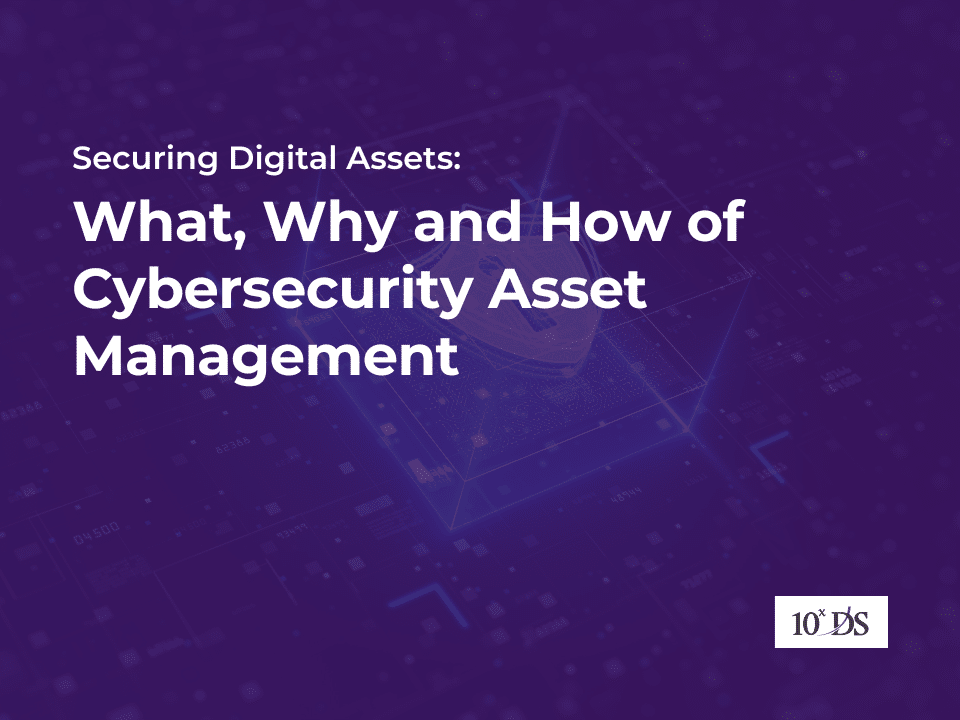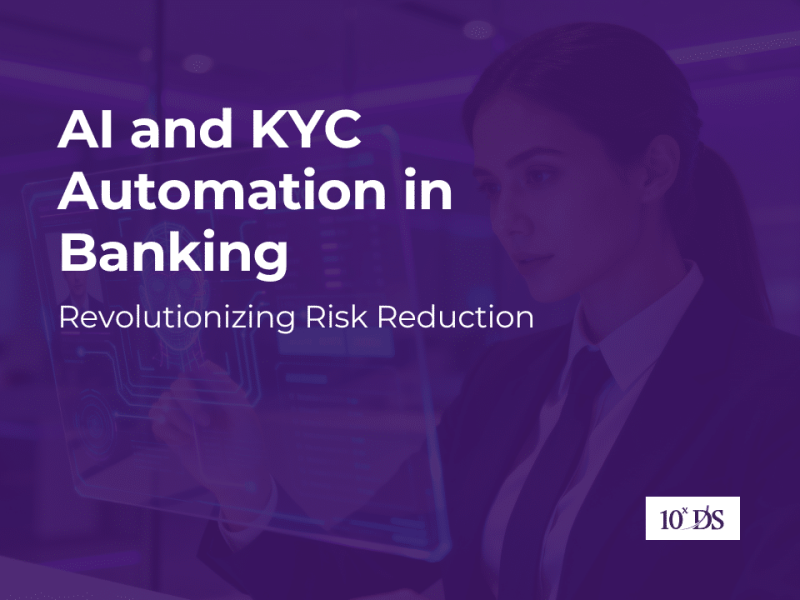
Securing Digital Assets: What, Why and How of Cybersecurity Asset Management
Organizations increasingly rely on a complex web of digital assets, from on-premises hardware to cloud-based services and software. Initial focus that they had on basic inventory tracking of assets was no more serving the purpose of securing assets. Asset management has grown into a critical component of modern cybersecurity strategies, enabling organizations to identify, monitor, and protect their assets in real time. According to studies, most security breaches are linked to unknown, unmanaged, or poorly managed assets. As businesses face an expanding attack surface due to remote work, IoT devices, and cloud adoption, effective asset management has become essential for mitigating risks. Moreover, the global market for cybersecurity asset management solutions is expected to grow underscoring its rising importance. This evolution highlights the need for organizations to adopt proactive and automated asset management practices to stay ahead of cyber threats and ensure compliance with increasingly stringent regulations.
What is Cybersecurity Asset Management?
Cybersecurity asset management is the practice of identifying, tracking, managing, and securing an organization’s assets, including hardware, software, data, and users, from a security standpoint. Assets can include anything that has value to the organization, such as physical devices (e.g., computers, servers), virtual resources (e.g., cloud instances), software applications, databases, and even data flows. The goal is to ensure that all these assets are accounted for, monitored, and protected against cybersecurity risks.
Why is Cybersecurity Asset Management Important?
- An organization needs to know what assets it owns to protect them effectively. Without visibility into its assets, it’s difficult to know where vulnerabilities or threats might lie.
- By identifying and categorizing assets, organizations can prioritize cybersecurity measures based on the criticality of each asset. Knowing which assets are most valuable helps in focusing resources on protecting them from potential cyber threats.
- Many regulatory frameworks, such as GDPR, HIPAA, and ISO standards, require organizations to keep an accurate inventory of their assets and ensure proper security controls are in place.
- Asset management helps organizations respond to security incidents more efficiently. Knowing the exact specifications and locations of affected assets can speed up incident response and recovery times.
- Proper asset management can help optimize the lifecycle of hardware and software, avoiding unnecessary purchases or unpatched vulnerabilities in outdated systems.
How is Cybersecurity Asset Management Implemented?
1. Asset Discovery and Inventory
The implementation of cybersecurity asset management begins with identifying and cataloging all assets within an organization’s network. This process, known as asset discovery, uses both automated tools and manual audits to create an inventory of hardware, software, virtual machines, cloud resources, and data flows. Automated scanning tools map out devices, software, and endpoints, while manual efforts ensure no critical or legacy assets are missed. This comprehensive inventory forms the foundation for monitoring and securing the assets. Without an accurate and up-to-date asset inventory, it becomes nearly impossible to manage cybersecurity effectively.
2. Asset Classification and Prioritization
Once the assets are identified, the next step is classifying them based on criticality and risk. This involves evaluating the importance of each asset to the organization’s operations and assessing its vulnerability to cyber threats. Critical assets, such as financial databases or sensitive customer information, are given a higher priority, with stricter security controls. The classification helps prioritize security efforts, focusing resources on the most valuable or vulnerable assets. Assigning ownership to these assets ensures that specific individuals or teams are responsible for their ongoing management and protection, thereby fostering accountability.
3. Integration with Cybersecurity Policies
Asset management must be tightly integrated with the organization’s broader cybersecurity policies. Access control measures, for example, should be aligned with the asset classification to ensure only authorized personnel can access high-priority systems. Additionally, compliance with regulations such as GDPR, HIPAA, or PCI-DSS may dictate how certain assets are handled, stored, or protected. Secure baseline configurations are applied to each asset, ensuring that standard security settings, such as encryption and firewall rules, are enforced from the beginning. By embedding asset management into these policies, organizations create a robust defense system that protects assets at all levels.
4. Continuous Monitoring and Security Controls
Effective cybersecurity asset management requires continuous monitoring of all assets for vulnerabilities, security breaches, or configuration changes. Tools such as Security Information and Event Management (SIEM) systems and Endpoint Detection and Response (EDR) platforms are employed to detect and respond to potential threats in real-time. Automated vulnerability scanning helps identify unpatched software or misconfigured devices, ensuring security gaps are addressed promptly. Continuous monitoring also involves network segmentation, which isolates sensitive or critical assets from less secure areas of the network. This real-time vigilance is essential in today’s cybersecurity landscape, where threats are constantly evolving.
5. Automation and Incident Response
Automation plays a significant role in streamlining the management and security of assets. Automated tools can handle repetitive tasks such as patch management, software updates, and incident detection. By automating these processes, organizations reduce the risk of human error and ensure that assets remain secure. In case of a cyber incident, such as malware infiltration or unauthorized access, the asset management system integrates with the organization’s incident response plan. Knowing the exact location and criticality of affected assets allows for faster and more targeted responses, minimizing damage and downtime.
6. Asset Lifecycle Management
Cybersecurity asset management extends across the entire lifecycle of an asset, from acquisition to decommissioning. When a new asset is acquired, it should be secured before being deployed into the network, with all necessary security controls in place. During its operational phase, the asset must be regularly maintained with security patches and updates. Finally, when the asset is retired, it should be securely wiped or destroyed to prevent any residual data from being accessed or exploited. Proper lifecycle management is crucial for ensuring that even outdated or unused assets do not become a security liability.
7. Auditing and Reporting
Regular audits are essential to ensure that the cybersecurity asset management practices are functioning as intended. Security audits help identify gaps, such as unauthorized software installations or unpatched vulnerabilities, while compliance audits verify that the asset management system adheres to industry regulations. Automated reporting tools generate insights into the organization’s asset security posture, providing visibility to stakeholders. These audits and reports allow organizations to continuously improve their asset management processes, ensuring that they remain compliant and secure.
8. Collaboration and Training
Successful implementation of cybersecurity asset management requires collaboration between various departments, including IT, security, and compliance teams. Different teams must work together to ensure that asset management is efficient from both an operational and security perspective. Employee training is also vital to the process, as staff must be aware of the security protocols in place and how to properly handle company assets. Training on cybersecurity best practices and reporting suspicious activity helps reinforce the security of the organization’s assets, creating a more secure environment overall.
The future of cybersecurity asset management is set to be shaped by advancements inautomation, AI integration, and real-time monitoring, allowing for more accurate and faster asset discovery, threat detection, and vulnerability management. AI and machine learning will enable predictive capabilities, reducing human intervention and improving overall security. As organizations adopt Zero Trust architectures, asset management will align more closely with continuous verification of all assets, both on-premise and in the cloud. The rise of cloud computing and IoT will demand better visibility and security for these assets, while tighter integration with regulatory frameworks will ensure compliance is seamlessly maintained. Asset management tools will become more scalable and flexible, adapting to complex environments such as hybrid and multi-cloud infrastructures. Predictive analytics will provide actionable insights, enabling proactive security measures, while improved integration with broader security ecosystems will enhance holistic protection. Simplified user interfaces will make managing complex environments more intuitive, and a stronger focus on asset lifecycle management will ensure secure handling from acquisition to disposal. These innovations will collectively elevate cybersecurity asset management to meet the demands of an increasingly complex digital landscape.
Talk to our Cybersecurity experts to learn more.


